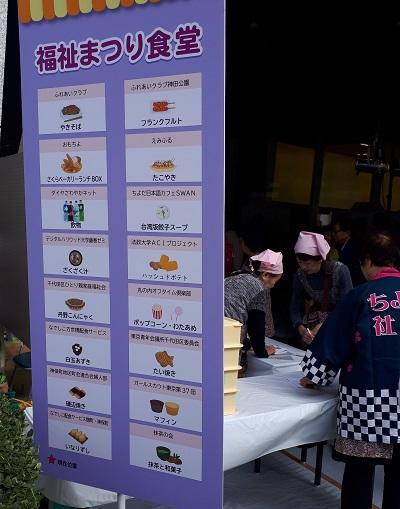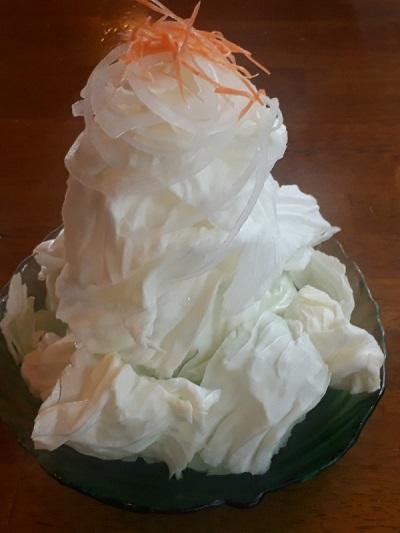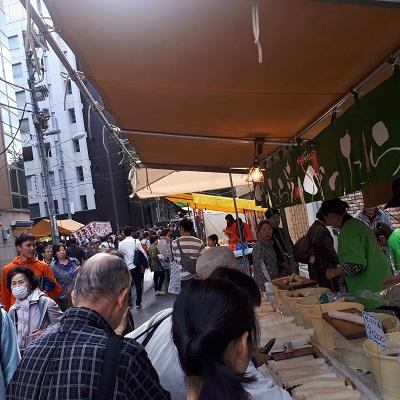List of Authors
>>About this blog
Recent blog post
|
[often slap]
October 31, 2018 09:00
Hello!
Today, I would like to jump out of Chuo-ku and deliver it from Tokyo International Airport (Hada Airport).
In this "Chuo-ku sightseeing correspondent blog", in principle, information about Chuo-ku is to be sent.
Why did you pick up Haneda Airport in Ota-ku?
That's because there is a replica of Nihonbashi, one of Chuo-ku's identity, in Haneda Airport.
The name is "Haneda Nihonbashi". It is located in the International Terminal Building, which started operation in 2010.
After arriving at the international terminal by train, monorail, or bus, you will arrive at the departure lobby on the third floor.
You can see something like that in the direction of the left back. Go up to the 4th floor by escalator and go in that direction ...
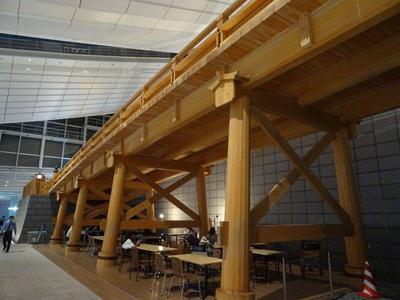
You can see "Haneda Nihonbashi". Under the bridge, tables and chairs are placed to create a rest space.
The replica of Nihonbashi is modeled on a wooden Nihonbashi in the late Edo period and the first half of the 19th century, instead of the stone-built Nihonbashi that is currently built, and cypress from Yoshino is used. (By the way, Nihonbashi in the late Edo period seems to have been using cypress and zelkova.)
The width and length are reproduced in about half the size (4m x 25m).
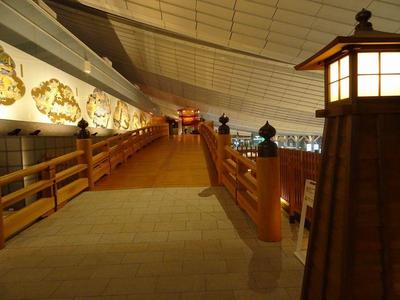
You can use stairs and elevators to climb on the bridge.
Wooden lanterns are also placed, creating a Japanese atmosphere in a modern design terminal building.
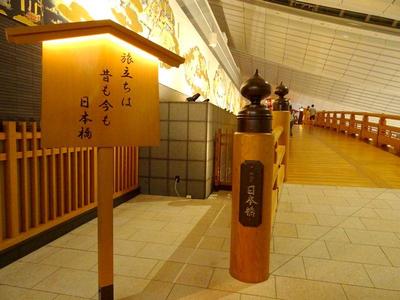
"The departure has been in Nihonbashi for a long time and now."...It is a word that I want to keep in mind as a sightseeing correspondent in Chuo-ku
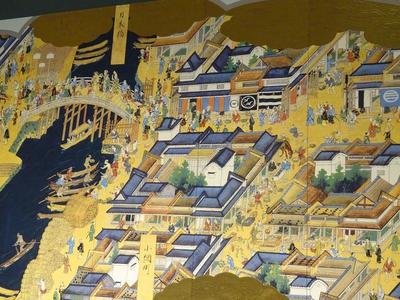
One side of the bridge is a wall, and a replica of the huge "Edo Figure Screen" is displayed.
The main towns of Edo during the establishment period are depicted, including Nihonbashi, Kyobashi / Shimbashi, Hatchobori / Tsukiji, and many towns in the current Chuo-ku. .
The photo is a part of Nihonbashi.
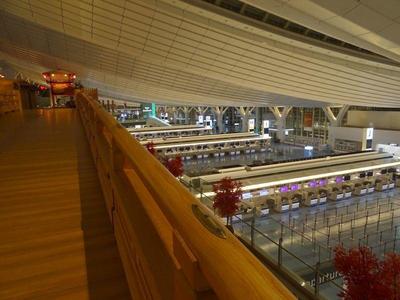
The opposite side of the "Edo-zu folding screen" has a good view, and you can see the departure lobby of the International Terminal Building.
Of course, it is far from the actual scenery seen from Nihonbashi....Laugh
You can enjoy the feeling of having slipped in time!
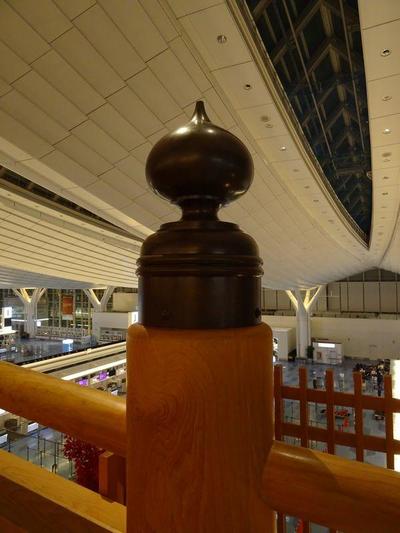
In addition, the "giboshi" shaped like an onion and the "hoju pillar" supporting it are reproduced in actual size.
By the way, the way from the departure lobby to "Haneda Nihonbashi" is called "Edokoji".
It is a shopping area inspired by the streets of the Edo period.
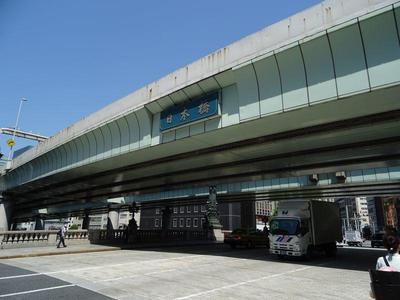
By the way, in addition to the "Haneda Nihonbashi" introduced this time, the "Edo Tokyo Museum" in Sumida-ku also has a replica of Nihonbashi from the Edo period, but all of them are reproduced only half in length....
The actual scale of Nihonbashi can only be experienced locally!
From Haneda Airport to Nihonbashi, you can take a direct train from Keikyu Line to Toei Asakusa Line without having to change trains.
Experience the texture of Nihonbashi in the Edo period at "Haneda Nihonbashi", think about the scenery of Chuo-ku in the Edo period with "Edo Figure Screen", and then stand on Nihonbashi....Such a trip may be interesting!
[Sam]
October 30, 2018 18:00
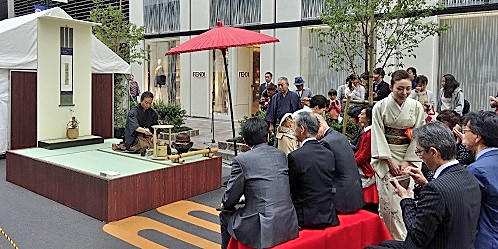 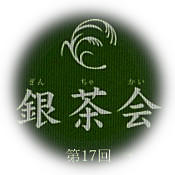 From October 17 to November 3, "Autumn Ginza", an event related to gourmet and art, is being held, but on October 28, one of the main programs, the "Silver Tea Party", which is celebrating its 17th anniversary this year, will be held. Was. From October 17 to November 3, "Autumn Ginza", an event related to gourmet and art, is being held, but on October 28, one of the main programs, the "Silver Tea Party", which is celebrating its 17th anniversary this year, will be held. Was.
13:00~16:00
A special event in which the five-class schools of Omotesenke, Urasenke, Mushakojisenke, Edo Senke, and Enshu-ryu tea ceremony and Sencha-do, which usually do not have the same seats, gather together, and the city of Ginza becomes the spot venue.
The sweets offered at the tea ceremony are original products that are elaborated by famous stores in Ginza. This year's theme is "Hana".
In addition, student creative tea ceremony, Tokyo University of the Arts in Gin Tea Party, Ito En Event (Ooi Ocha Daicha Party), sweets experience at parent and child Ginza are also held at the same time, so even those who are not familiar with the world of tea can easily experience Japanese hospitality.
[Silver]
October 30, 2018 12:00
It's a weekday. We gathered in front of the Heidai Shoten in front of Nihonbashi Mitsukoshi, and six men and women were watching the old Nihonbashi picture scrolls.
Enter the money museum through the Mitsui Main Building and the Bank of Japan. At the Money Museum, I studied the history of money.
I visited Meibashi and Nihonbashi to learn about being the prime sign of Japanese roads, and learned about the history of the fish market in Nihonbashi at Otohime Square.
Entered "Honen Manpuku" in response to the needs of women's groups for a delicious and quiet lunch place. We had 6 seafood bowls, limited to 15 meals.
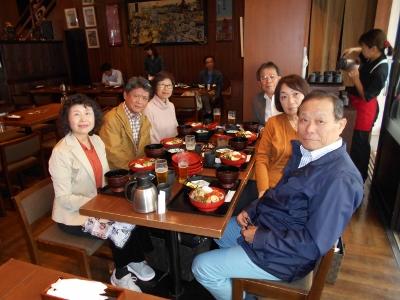
With a happy smile
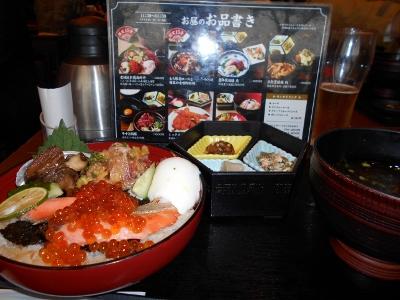
Please take a look at the beautiful seafood bowl.
After this, the party entered Cored Muromachi and worshiped Fukutoku Inari. I purchased a wonderful Japanese paper product from Ozu Washi and enjoyed a stroll from Kodemmacho to Ningyocho.
Everyone, please enjoy a walk on this course.
Click here for the website of Honen Manpuku. http://www.hounenmanpuku.jp/
[Sam]
October 29, 2018 12:00
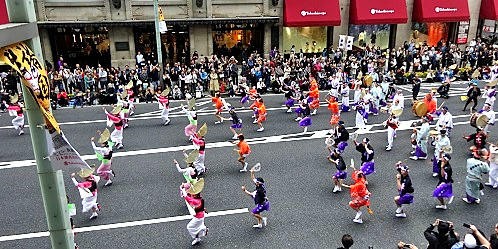 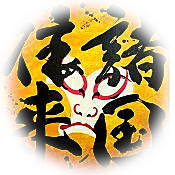 On October 28, the Nihonbashi-Kyobashi Festival, a gathering of culture and food from all over the country, was held around Chuo-dori from Kyobashi to Nihonbashi. On October 28, the Nihonbashi-Kyobashi Festival, a gathering of culture and food from all over the country, was held around Chuo-dori from Kyobashi to Nihonbashi.
This festival is celebrating its 46th anniversary this year.
The annual "Oedo Kashiki Parade", which is attended by a total of about 2,000 people, brings together festivals and dances from various places with the aim of becoming the starting point of the five highways connected to the whole country, Nihonbashi.
Following the “Opening Parade”, 14 groups of Awa Odori and other festivals and dance groups from all over the country participated, led by the “Edo Fire Memorial Party” “Kimidori, Maburi” of the “Edo Fire Memorial Party”. We parade along Chuo-dori from 2-chome to Muromachi 2-chome.
Even after the parade passed, this time, "Dare Demo BON Dancers" led by SAM of TRF will be added, and you can enjoy unique performances from various places at five locations.
On Nishikawashi guardian of children and travelers Street, there is a "country traffic market" that reproduces the bustle of Edo and sells specialty products nationwide.
[The Rabbit of Tsukuda]
October 28, 2018 14:00
The gull, designated as a bird in Tokyo, flew again this year. According to the rabbit birdwatching for the last three years, they come here in Chuo-ku around October 20 every year.
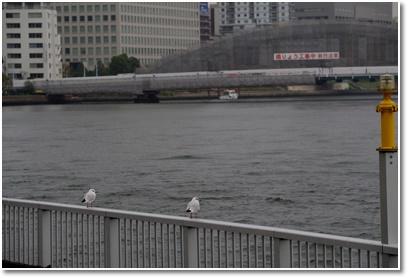
When I found it, I was resting about eight birds, but I flew during the photography time and only two birds remained.
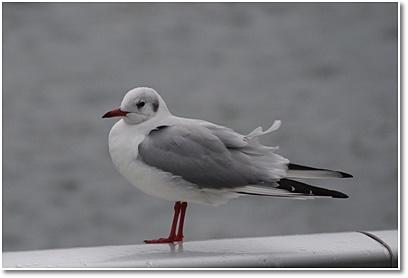 Tokyo bird "Yurikamome" (Shinagawa-ku bird) Tokyo bird "Yurikamome" (Shinagawa-ku bird)
Looking at how the Japanese turtle was designated as a bird in Tokyo, it was designated in 1965, and it was designated as the first place in the postcard voting by Tokyo residents from pheasants, starlings, Japanese white-eye, etc. . By the way, the second place is Japanese white-eye and the third place is Hibari.
So what are the birds in the ward designated?
In the 23 wards, only four wards were designated as birds in the ward: Japanese plums in Shinagawa-ku, Onaga in Setagaya-ku, swan in Chiyoda-ku, and Japanese tit in Meguro-ku.
 The bird "Onaga" in Setagaya-ku The bird "Onaga" in Setagaya-ku
The picture is a naga that I took in Tsukuda last month. The feathers are muffy because they are the young man of adult bird who has just nested. It is a member of the crow, but it is a beautiful bird with a black head and a long tail, and can be found in the trees of Akashicho and Tsukuda Park in Chuo-ku. The voice is characterized by giggy, so if you think it's a strange voice, look for it and look.
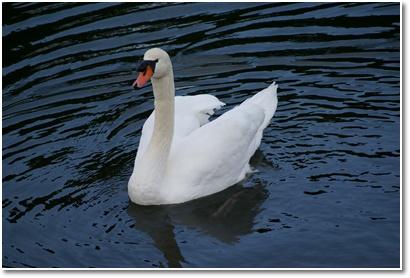 The bird "Swan" in Chiyoda-ku The bird "Swan" in Chiyoda-ku
The photo shows a mute swan in the moat of the Imperial Palace. These swans are not found in Chuo-ku.
 The bird "Japanese tit" in Meguro-ku The bird "Japanese tit" in Meguro-ku
Citrus screams with a clear voice. This photo was found in a squeal near the Chuo-ku ward office. I'm in such a place! I was so happy. It is a bird that appears relatively in the city.
It is a pity that birds in Chuo-ku are not designated, but birds in each ward can be easily seen in Chuo-ku. From now on, the day when the plums will fly more and more, and the fence of the Sumida River Terrace will be full is almost ready.
[Nyan,]
October 27, 2018 18:00
On October 20, we participated in the welfare council festival held in Chiyoda-ku (ward office) next to Chuo-ku. . We had a variety of entertainment/workshops, Ultraman Seven participated in the event, opened stores in our sister cities, Tsumagoimura and Akita. In addition, various handmade foods are sold at low cost, so we were able to have a more enjoyable time than we had imagined  . The photo shows a list of food at the store. I received most kinds, and I was quite hungry.
Tsumagoi Village (a sister city of Chiyoda-ku) is cabbage. (The photo shows the cabbage of Tsumagoi Village)
All dishes and chopsticks at the store are unified and thoroughly reused. The festival in the future may be like this.
********************
By the way, while reflecting on that I ate a little too much, I walked to Nihonbashi via Kanda.
Yes, this time it's Betara City in Nihonbashi.
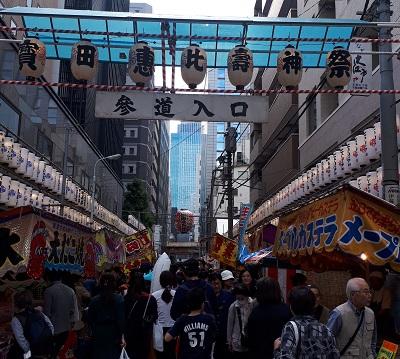 Speaking of Bettara City, among the various theories, the name "Bettara Pickled" comes from the fact that radish is pickled with sweeteners such as koji and sugar, so it sticks on clothes . In the past, a young man shouted, "I'm swaying a radish tied to a rope while shouting, "I'm swaying it ~, I'm swaying it on the sleeves of a visitor's kimono." " There are some descriptions in this article. In a sense, it looks smiling, but personally, at that time, if you pollute your kimono, it would be harder to remove the smell and dirt more than modern times, so is it really permissible like such a junior high school student? ? I'm wondering about it. How did you actually do it?  
By the way, my aim is "with skin" and "red turnip" among pickled vegetables.
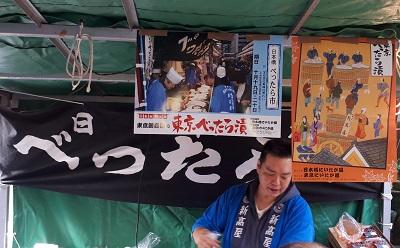 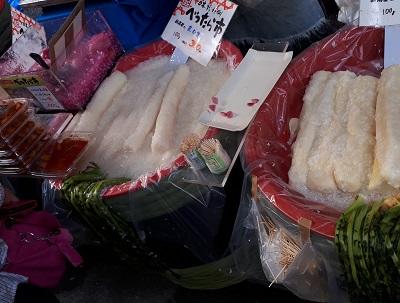 I ate too much before coming to Betara on this day, so I didn't get much hungry, but it's fun to go around the stalls and walk around. What are you looking for? If you missed this year, it will be fixed on October 19 and 20 every year, so I hope you will incorporate it into your schedule  .
|
Links
|
![]()



![]()





 From October 17 to November 3, "Autumn Ginza", an event related to gourmet and art, is being held, but on October 28, one of the main programs, the "Silver Tea Party", which is celebrating its 17th anniversary this year, will be held. Was.
From October 17 to November 3, "Autumn Ginza", an event related to gourmet and art, is being held, but on October 28, one of the main programs, the "Silver Tea Party", which is celebrating its 17th anniversary this year, will be held. Was.


 On October 28, the Nihonbashi-Kyobashi Festival, a gathering of culture and food from all over the country, was held around Chuo-dori from Kyobashi to Nihonbashi.
On October 28, the Nihonbashi-Kyobashi Festival, a gathering of culture and food from all over the country, was held around Chuo-dori from Kyobashi to Nihonbashi.
 Tokyo bird "Yurikamome" (Shinagawa-ku bird)
Tokyo bird "Yurikamome" (Shinagawa-ku bird)  The bird "Onaga" in Setagaya-ku
The bird "Onaga" in Setagaya-ku The bird "Swan" in Chiyoda-ku
The bird "Swan" in Chiyoda-ku  The bird "Japanese tit" in Meguro-ku
The bird "Japanese tit" in Meguro-ku